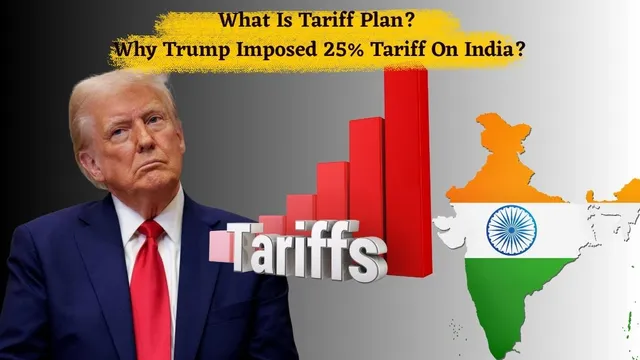- By Aditi Priya Singh
- Thu, 31 Jul 2025 03:44 PM (IST)
- Source:JND
What Is a Tariff Plan: On July 30, 2025, American President Donald Trump announced a 25% tariff on Indian goods, shocking many across the world. This move came just a day after Indian Prime Minister Narendra Modi addressed Parliament, stating that no foreign leader played a role in the ceasefire between India and Pakistan during the Pahalgam attack conflict. Trump, who previously claimed that he was the one who was behind that ceasefire effort, appeared offended by Modi's comments. Many analysts think that political tensions between the two nations may be the cause of this abrupt tariff decision.
A tariff is a tax imposed on imported goods that raises their cost to consumers in the importing country. When a nation imposes tariffs, it usually does so to protect its industry or to put pressure on other countries. In this instance, worries about trade relations, economic effects, and escalating diplomatic tension have been raised by Trump's 25% tariff on India. Let's check out what a tariff plan is, why it matters and the potential long-term effects of this decision on India.
What Is a Tariff Plan?
A tariff is a tax imposed by a government on goods imported from another nation. It is paid by the importer, usually a domestic business, rather than the exporter and is typically given as a percentage of the product's value. The main purpose of a tariff is to raise the price of foreign goods, encourage customers to purchase domestic goods and protect the domestic industry. Tariffs are also used by governments as a tool in trade negotiations and to increase revenue.
ALSO READ: India's Pharma Hit By Trump Tariff But US Patients May Feel It More: 5 Key Impacts On America
Why is Donald Trump imposing a 25% Tariff on India?
Trade Deficit and “Reciprocal” Tariffs
After being elected as president for his second term, Donald Trump relaunched a major trade initiative, sometimes referred to as the “Liberation Day” plan, which includes a base 10% tariff on imports from all countries, and higher reciprocal tariffs based on their trade barriers and deficits with the U.S.
India's trade deficit with the United States is estimated to be $45.7 billion in 2024. When compared to its import duties of about 2 to 3%, Washington considers India's average import duties of 12 to 17% to be excessive.
Reasons for Targeting India
Some factors can be a reason for the application of high tariffs by Trump on India. We have listed the major factors below;
*Trump criticised India as a "tariff king" for its high tariffs on American goods, particularly in industries like dairy, agriculture, pharmaceuticals and automobiles.
*Another factor was India's close commercial relations with Russia, which included purchases of energy and military hardware. In light of the ongoing conflict in Ukraine, Trump characterised this as "ALL THINGS NOT GOOD!"
What will be affected by Trump’s Tariff Plans on India?
On July 30, 2025, Trump declared a 25% tariff on Indian imports, which would take effect on August 1. This announcement came after the failure of trade negotiations with India to conclude by his deadline. Steel, aluminium, automobiles, medications and other products are all impacted by the tariffs. Under previous regulations, some products had already been subject to 25–27% duties beginning in April.
Tariffs can lead to higher costs for U.S. consumers, potential inflation and disruption in global supply chains. Many economists argue that tariffs harm global economic welfare and slow growth in the long term. Here are some major impacts that India can face if higher tariffs continue for long terms;
1. Increased Data Rates: Higher tariffs may lead to increased data rates, making internet services more expensive for consumers.
2. Premium Services: Telecom operators may offer premium services with higher tariffs, providing better quality and priority access to customers willing to pay more.
3. Bundled Services: Higher tariff plans may include bundled services like streaming, music, and cloud storage, offering more value to customers.
4. Revised Pricing: Telecom operators may revise pricing strategies, introducing new plans with higher tariffs to generate revenue and sustain business growth.
5. Impact on Consumers: Higher tariffs may affect consumer behaviour, leading to changes in usage patterns, plan preferences, and potentially driving demand for affordable alternatives.

